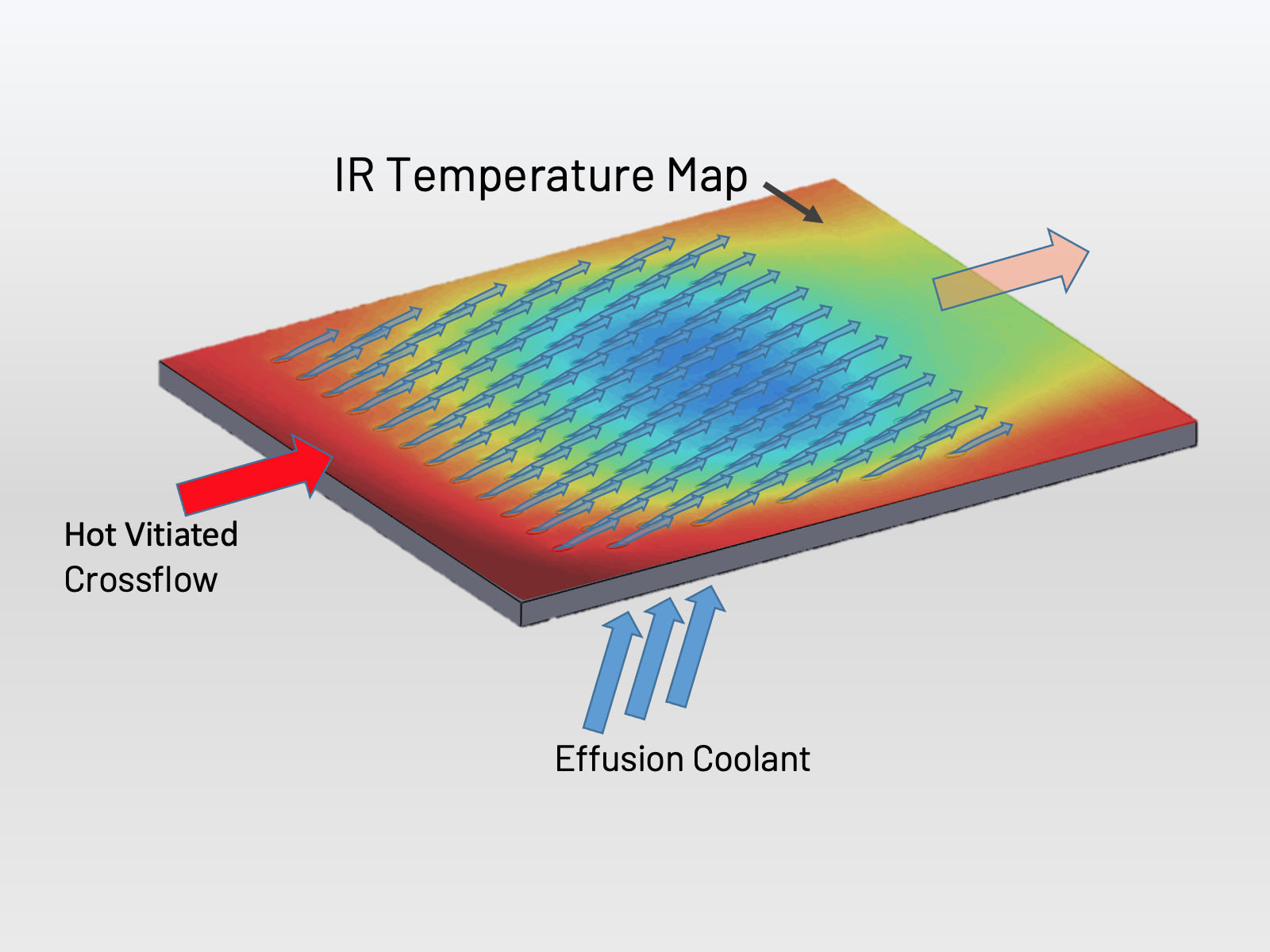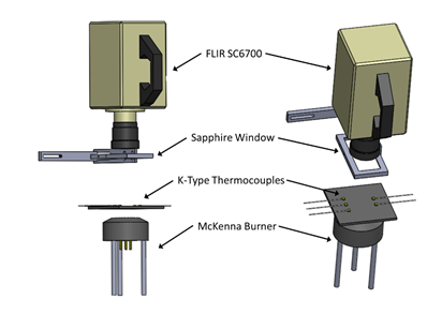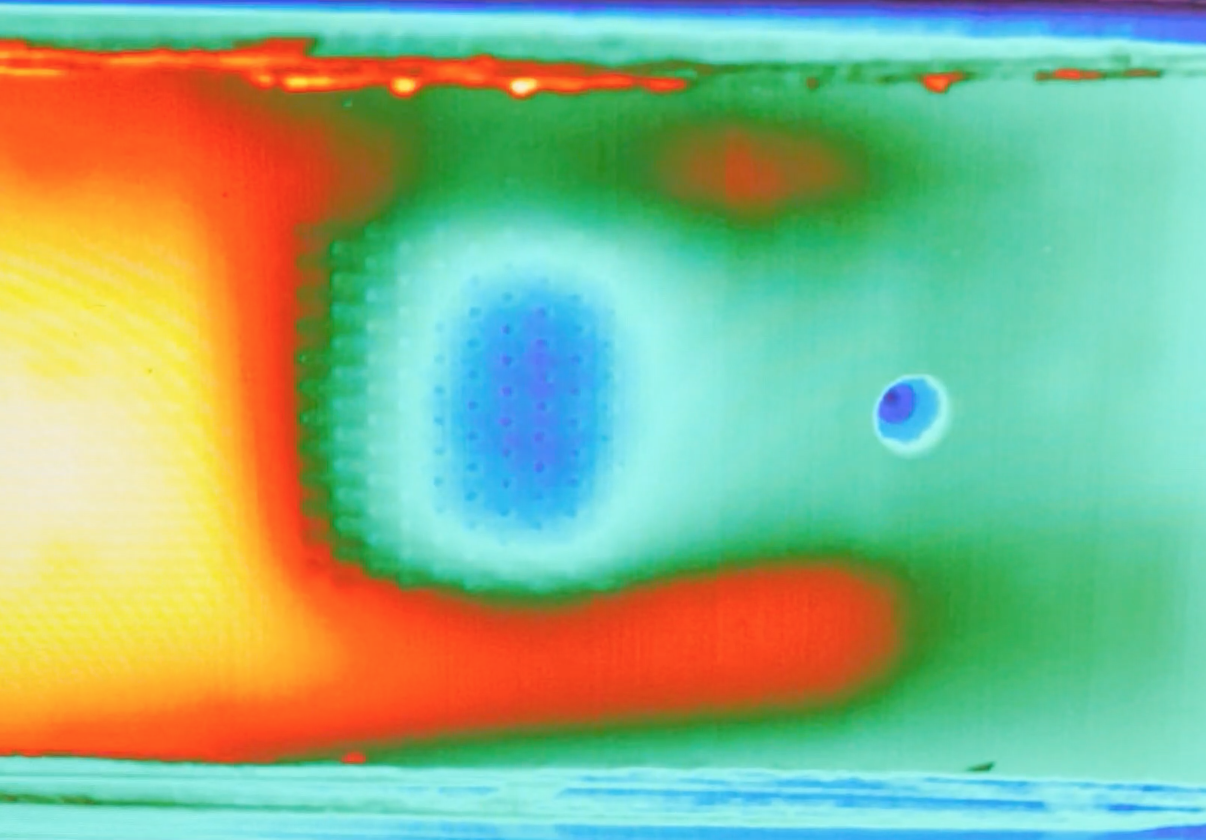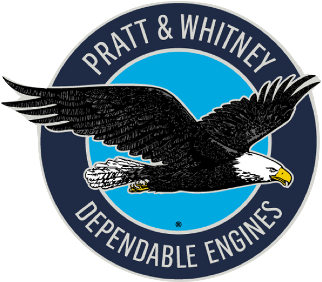
Figure 1

Figure 2

Team 67
Team Members |
Faculty Advisor |
Kevin Snyder |
Dr. Baki Cetegen Sponsor Pratt & Whitney |
sponsored by

This research project investigates thermal characteristics of effusion cooling and presents methodologies for obtaining surface temperature, cooling effectiveness, heat flux, and heat transfer coefficients using infrared thermography. The objectives for this research were set in coordination with the Aero Thermal Fluids Combustion team at Pratt & Whitney. The analysis provided in this research provides experimental validation of effusion cooling numerical models. Effusion cooling effectively allows combustors to operate at higher temperatures by directing cool flow from the compressor through small angled holes to form a protective cooling film above the surface of the combustor liner. The novel characteristic of this research is the ability to perform infrared imaging through a hot vitiated crossflow that reaches ~1400 K. This technique is used to analyze thermal characteristics of effusion cooling with various hole configurations over a range of blowing ratios between 1 and 10. A HITRAN analysis was completed for the emission from gaseous combustion products to identify desired wavelength range to image. It was found that between 3.75 μm and 4 μm emission from crossflow is minimal, allowing imaging of surface behind crossflow with minimal interference. An in-situ calibration was then performed using a bandpass filter centered at 3.91μm ± 0.178μm. Multiple effusion plates were tested to compare effect of hole configuration on cooling effectiveness. Infrared measurements of front and back surface temperature were converted to temperature maps in MATLAB. Front side temperature images were used to calculate cooling effectiveness using known crossflow temperature and coolant temperature. An ANSYS model was developed to use front and backside temperature images to calculate heat flux. Preliminary heat transfer coefficients were calculated using gas temperature images generated by Rayleigh scattering thermometry and heat flux values from ANSYS.
